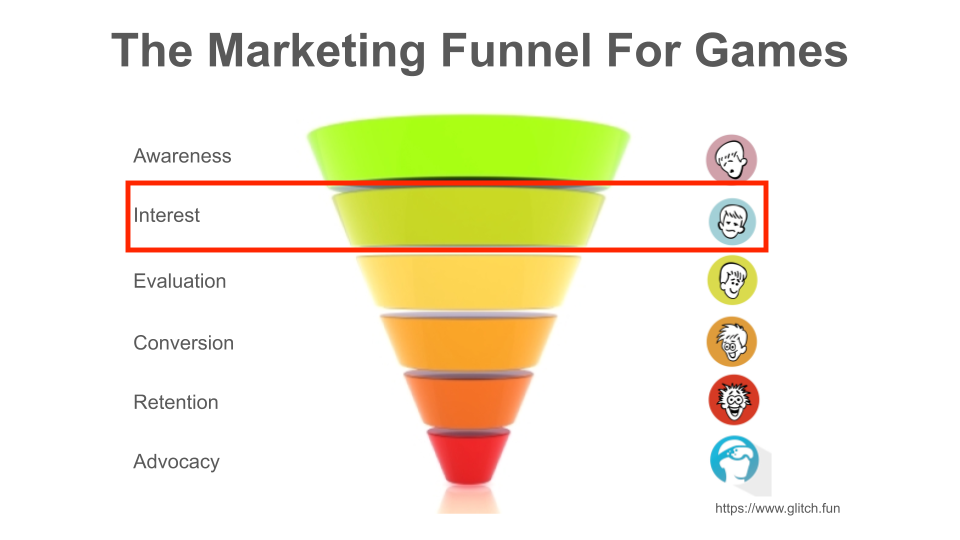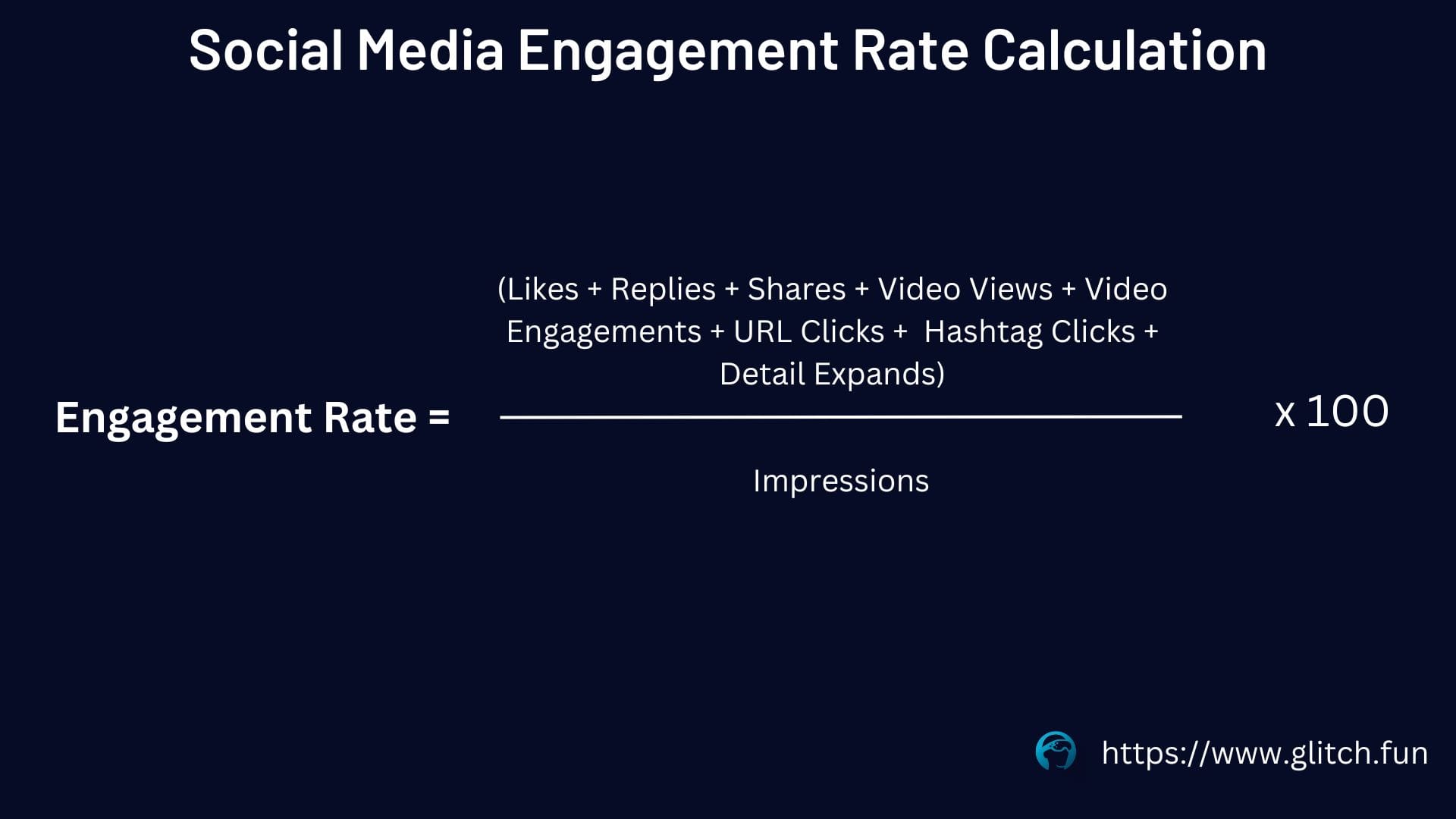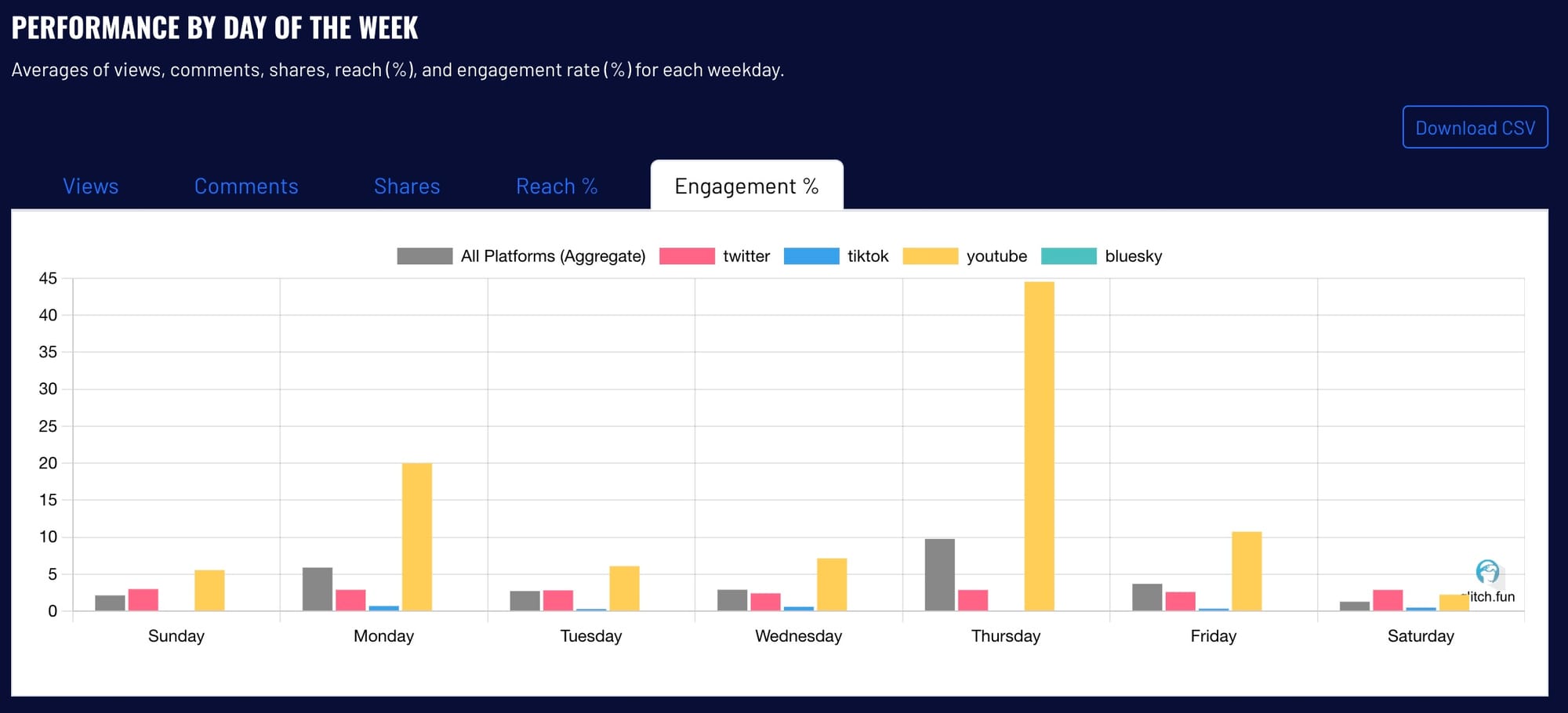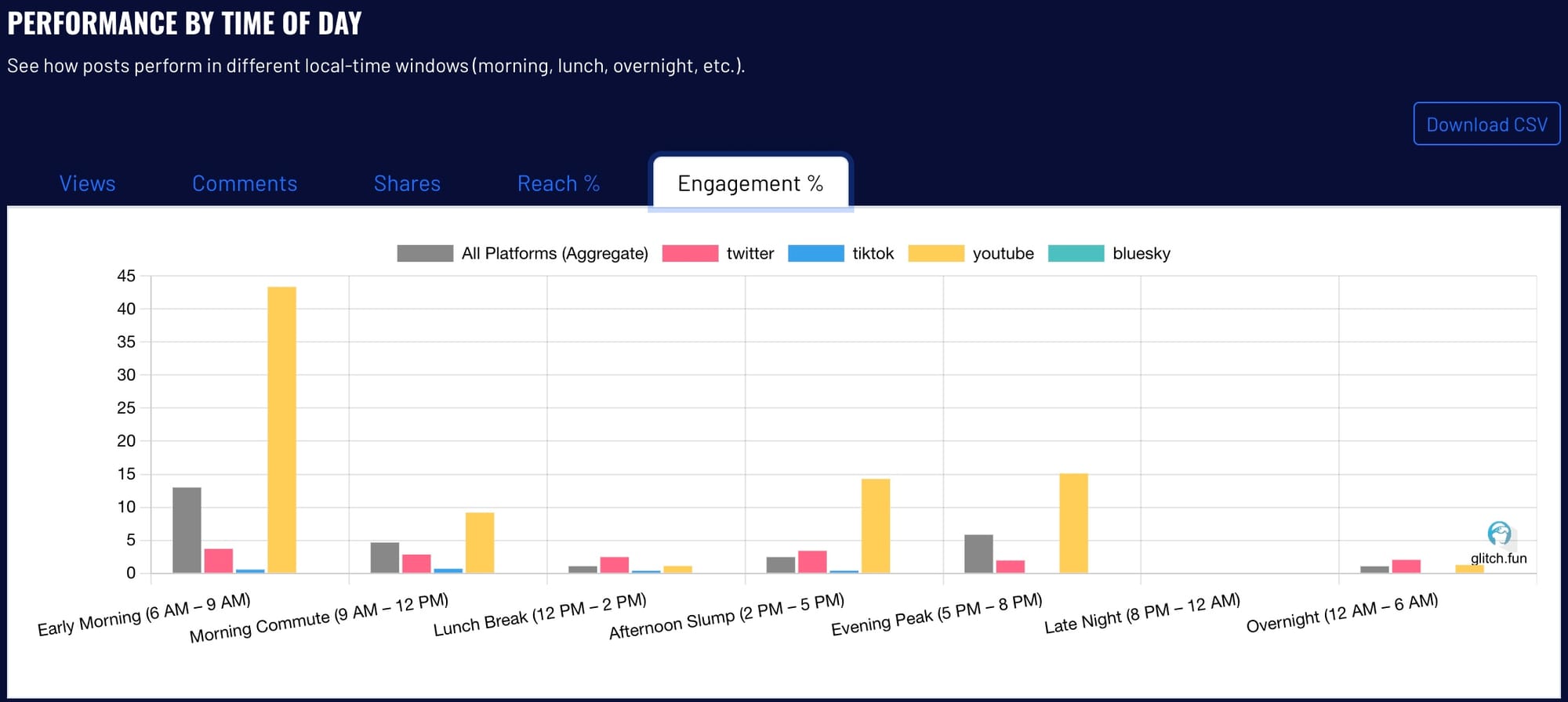Debugging The Interest Stage Of Your Marketing Funnel
Struggling to capture player interest in your game? Learn how to debug the 'interest stage' of your marketing funnel like a developer—analyzing click-through rates, engagement metrics, and content strategy.

Continuing in our series of debugging marketing problems for your game like you would with development, the next stage we are going to debug is the interest stage. This stage is a critical stage because it indicates a very important aspect about your game – is it marketable.
This phase is crucial in understanding whether your game can attract and maintain attention from a wider audience. If people are not showing curiosity or engagement with your content, it might suggest deeper issues that need addressing before you move forward with larger marketing efforts or even further development.
At Glitch, we do data-driven game marketing, and all the results here will be focused on using a 'data is king' approach.
The interest stage in your marketing funnel is when people are showing that they do have a level of interest in your game.

When you think of interest, it can be, “I am not sure I would buy or play it right now, but the game seems like a neat idea.” When it comes to identifying problems at the interest stage, you might experience things like:
- Low click-through rates
- High bounce rates on your digital properties (for instance, the average bounce rate for gaming-related websites can range from 45% to 60%, according to industry benchmarks)
- People not liking or commenting on your social media
- Low open rates on email marketing (the gaming industry’s average email open rate often sits around 20-25%)
- If you have produced long-form content (ie: blog) and you find people are not reading through it (studies show that reader engagement can drop sharply after about 1,600 words)
If you feel that these are your current issues, read this article on how to assess the issue and solve it.
What Counts As Interest
Interest, when a person likes the content that you are producing. The way interest is measured changes between the different mediums. Using social media, interest might be:
- Liking, Hearting, Upvoting
- Sharing
- Comments
In content marketing, interest can be:
- Reading the content that was producing
- Leaving the comment about the content
With advertising, can come in the form of:
- Clicking through the advertisement
- If a video ad, watching the ad in full
- If it’s a social ad, they will like, share, comment etc
In email marketing, interest activities are:
- Opening the email
- Reading it
- Clicking thru
- Even replying to the email in a positive way
These actions require minimal time and investment from the user to engage with. Sometimes there is a blurry line between certain user actions that show interest versus actions that show the next stage, evaluation. Let’s look at website views and comments.
Views: Merely visiting the website is an interest-level activity: the user is intrigued enough to check it out. But if they check out multiple pages on the website and then make a look at a social page and the Steam page, they are actually evaluating.
Comments: Another confusing metric is comments. Some comments are just interest. Let’s say you post a funny video about your game and they say “this is hilarious!”. There is interest but no intent to buy. But let’s say they ask “how much is the game going to cost” or “will we be able to change skins,” they are evaluating your game.
Expectations On Interest Levels
The level of interest you get is directly linked to the awareness, or how many impressions/views that your content gets. It is hard to give an exact percentage on the interest level that you get because you have to take in several factors such as:
- The kind of content that you are showing
- The make up of your audience
- The algorithm of your social platform you are using
- The targeting system (aka hashtags) that you are using for the platform
- Time of the day the content was post
- Luck
To calculate the engagement rate percentage that shows the interest level on social media, you do: (likes + comments + shares + etc) / impressions * 100.

Taking all of this into account, the average engagement rate is anywhere from 1% to 5%. Above that is exceptional engagement. If you are below 1% engagement, that signals a problem, with the most major being your game not being marketable.
Interest and Making a Marketable Game
The interest level is a key indicator of a game’s marketable potential, or how it is often said: “making a game that is marketable.” The process of making a game marketable is figuring out what appeals to a certain audience. And showing interest is a relatively easy task for someone to do; it’s literally just a click of a mouse or the tap of the thumb.
So if someone is not showing non-committal interest, it typically means:
- Wrong Audience: The way the content is being positioned through things like hashtags, selected forums and other ways of targeting is not reaching the right audience who is interested in your game type.
- Low Quality Game: The game and its content being produced is low quality. The art is not appealing, the designs are not up to expectations, the level of quality is not resonating.
If the engagement rate is below 1%, then this is a signal your game is not marketable yet. And your next steps in development might be figuring out how to make your game marketable before investing further in your game’s future.
And just because your game is not marketable now does not mean that it never will be marketable. But it is better to capture this earlier than later. You can read this article here on creating a marketing and compelling game.
How Can You Improve Interest
Outside of a low quality game, there are ways to improve the interest of your game and it’s content, and it’s really but a test and learn approach. You have to test out different variables. Below we have several real metrics from a client that uses the Social Scheduler to collect data on what kinds of metrics the most engagement that you can also setup and utilize for your game.
Day of Posting: The day you post can cause engagement to go up and down. For example, some perform better on the weekends and have weekday slumps.

Time of the Day: Similar to day of the week, time matters. Some posts perform better given the time of day.

Emotional Tone: The emotional tone in a post can have a strong effect on how people decide to engage with the post.

Content Type: Devlogs, questionnaires, giveaways and more. The kind of content you produce affects engagement.

Media Type: The media type, length and format all have different levels of engagement, which can also vary depending on the platform.

By testing all these features and using a data-driven approach, you can, over time, figure out what kind of content creates the most interest. For a full article on creating content and testing types, read here. Remember that incremental changes can lead to meaningful improvements—according to various A/B testing case studies, even small tweaks like altering headlines or thumbnail images can increase engagement rates by 10–20%.
Debugging the Interest Stage:
Interest is the second step in determining if your game can capture the hearts (and clicks) of its target audience. By carefully analyzing metrics such as click-through rates, bounce rates, social media engagement, and email open rates, you can pinpoint where your content strategy may be missing the mark.
Debugging the interest stage, much like you would debug your game’s code, involves identifying low-engagement signals and running tests—around timing, tone, content type, and more—until you find the combination that resonates with your community.
It’s an iterative process, but getting it right can save you a substantial amount of effort and resources in the long run, ultimately helping to prove your game’s marketability before you invest in further development.




